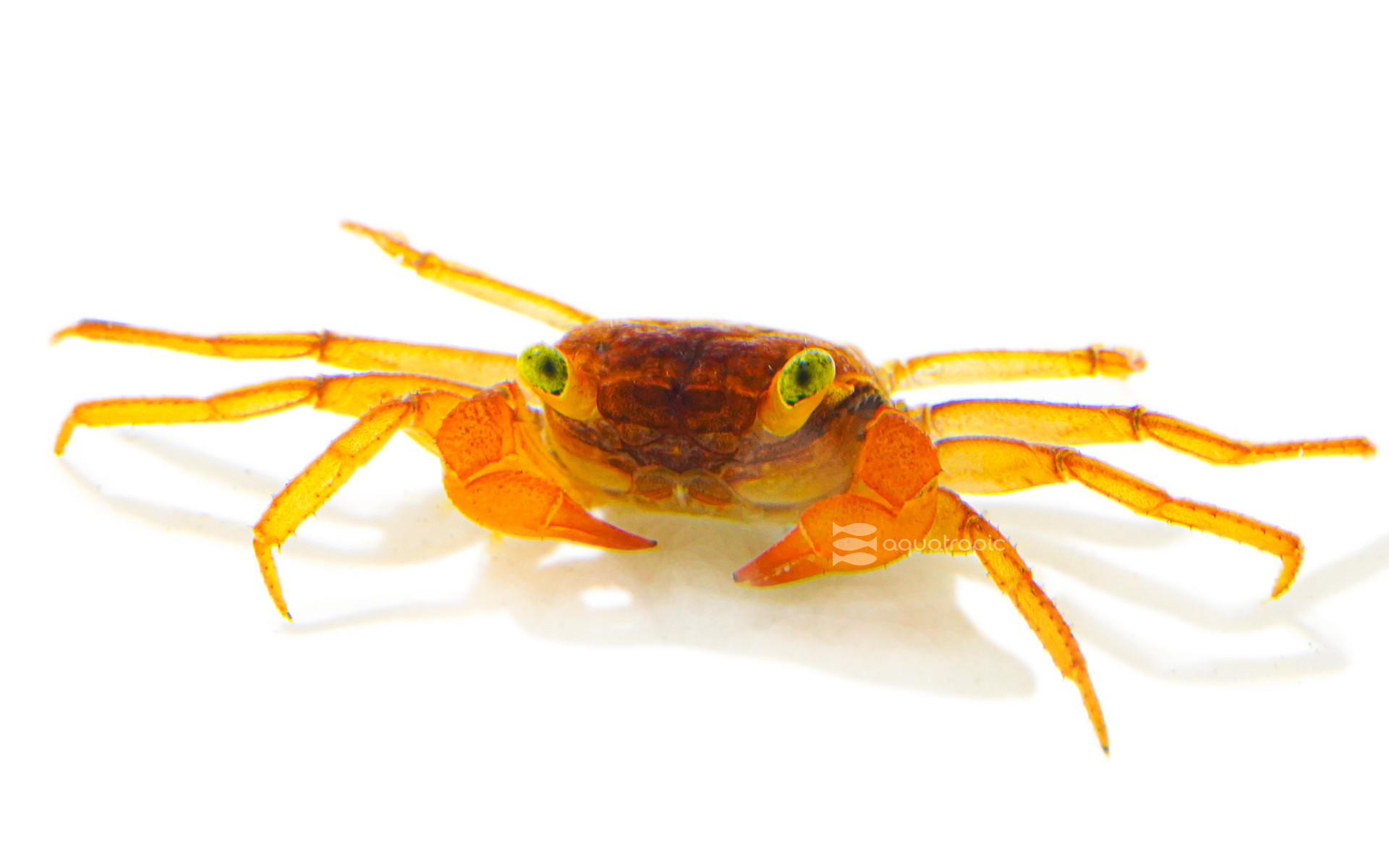Orange Is The New Back

Orange Back Crabs (and most other Geosesarma species) are interesting critters to keep. Because of their need for both dry land and water, they are best kept in a display that has both called a paludarium. They are a mostly terrestrial crab native to the banks of streams, ponds and lakes of Indonesia. In the wild, they exist on filamentous algae, forest floor detritus, and decomposing plants etc. They are a very small crab reaching a max size of only 2.5 inches or so but average closer to 2 inches at adulthood.
Because of their diminutive size, these crabs do not need a huge amount of space, though they do have other fairly specific requirements. As a communal species, they should ideally be kept in small groups (3 or more).. Keep these groups to their species as while they get along well with others of their own kind, they will probably be aggressive with other crabs, even other Geosesarmas.
Displays should be carefully planned; and here is where we get into the Paludarium; put plainly, it is a cross between an aquarium and a terrarium. A quick google image search will show you some impeccable examples of this type of display. A key portion of the Paludarium is that there is always some kind of “shoreline.” These crabs need a surface where they can climb out of the water or else drowning is a certainty. They will spend most of their time on land, but require the freshwater as well as they will submerge frequently and require this in order to successfully molt.
As native forest floor dwellers, Orange Back Crabs appreciate cover. They are very adept climbers and as such some part of the display should have something for them to climb, which could be plants. In larger displays they seem to do well with live plants, and do little to them. They will clean up around the plants and pull dead leaves etc. In smaller displays this clean up seems to be too impactful for some plants, which suffer as a result of the intense scrutiny of the crab. The display should have a tight fitting lid to keep them from escaping (which they will do without the lid.) Ideally the paludarium should be humid and warm 75 to 82 degrees and over 75% humidity. A small display for a couple specimens could be 5-10 gallons, 40 gallon breeder tanks make great displays for larger paludariums with more animals because of their long footprint.
Feeding is very easy as they are used to looking at just about anything for food. They are omnivorous scavengers (and like most opportunistic scavengers, will hunt as well). As such, they do an excellent job cleaning up the tank, but in addition, like all “cleaners”, they need supplemental food. Feed them a mix of high quality crab / freshwater fish foods, as well as fresh (or not quite so fresh) vegetables, insects, worms etc. While they will eat old fruit, it seems to decompose to fast in the paludarium, making a bigger mess than it is worth (plus fruit flies are a pain to get rid of). With a little planning, Orange Back Crabs could make for a stunning display as the central feature of a paludarium, or a pair could be an added interest to a display with fish. They are colorful, easy to care for, and interesting to watch. If you're interested in keeping a small group of Orange Back crabs, ask your Local Fish Store about getting you some from Aquatropic Today!